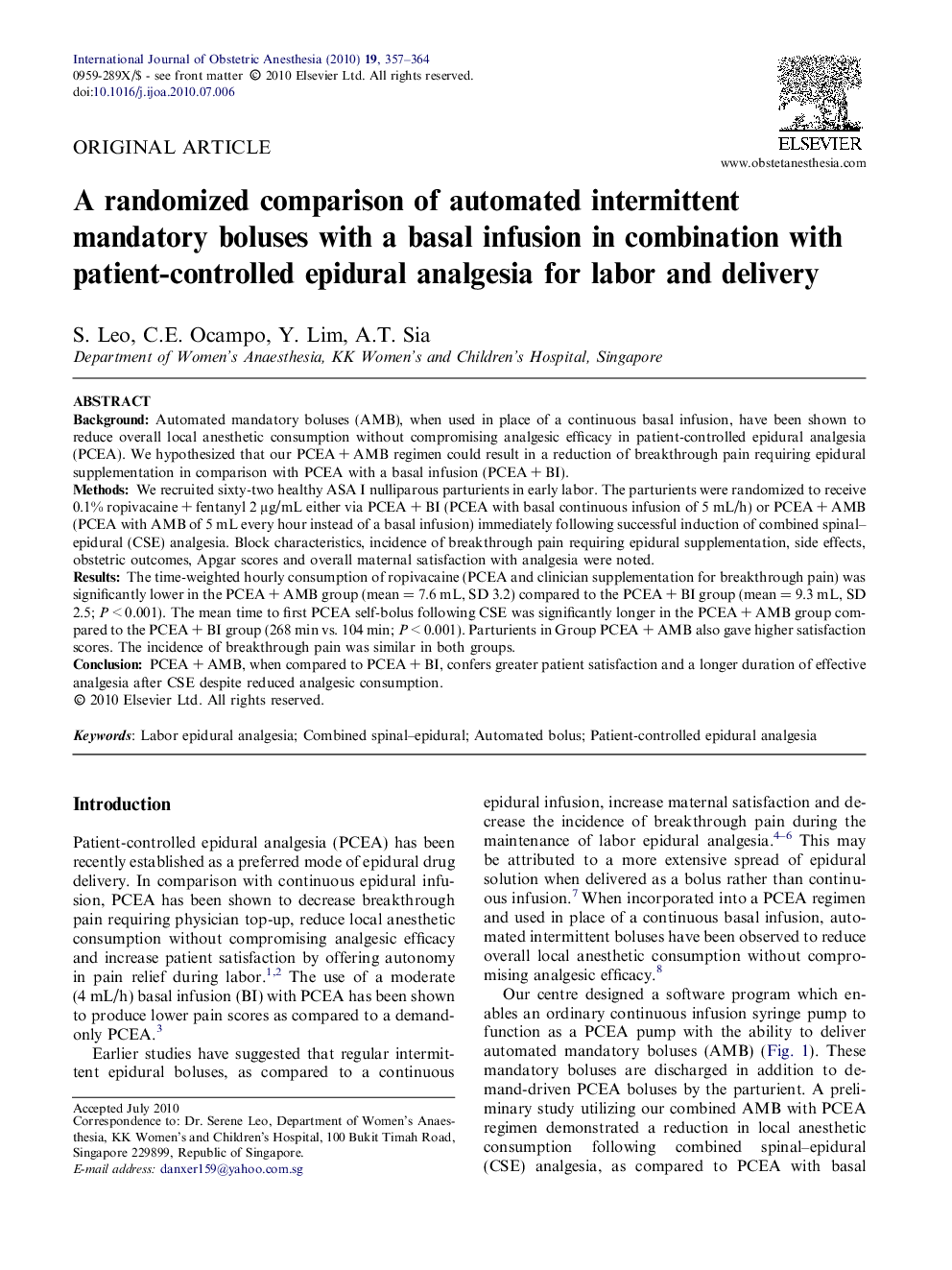| Article ID | Journal | Published Year | Pages | File Type |
|---|---|---|---|---|
| 2758236 | International Journal of Obstetric Anesthesia | 2010 | 8 Pages |
BackgroundAutomated mandatory boluses (AMB), when used in place of a continuous basal infusion, have been shown to reduce overall local anesthetic consumption without compromising analgesic efficacy in patient-controlled epidural analgesia (PCEA). We hypothesized that our PCEA + AMB regimen could result in a reduction of breakthrough pain requiring epidural supplementation in comparison with PCEA with a basal infusion (PCEA + BI).MethodsWe recruited sixty-two healthy ASA I nulliparous parturients in early labor. The parturients were randomized to receive 0.1% ropivacaine + fentanyl 2 μg/mL either via PCEA + BI (PCEA with basal continuous infusion of 5 mL/h) or PCEA + AMB (PCEA with AMB of 5 mL every hour instead of a basal infusion) immediately following successful induction of combined spinal–epidural (CSE) analgesia. Block characteristics, incidence of breakthrough pain requiring epidural supplementation, side effects, obstetric outcomes, Apgar scores and overall maternal satisfaction with analgesia were noted.ResultsThe time-weighted hourly consumption of ropivacaine (PCEA and clinician supplementation for breakthrough pain) was significantly lower in the PCEA + AMB group (mean = 7.6 mL, SD 3.2) compared to the PCEA + BI group (mean = 9.3 mL, SD 2.5; P < 0.001). The mean time to first PCEA self-bolus following CSE was significantly longer in the PCEA + AMB group compared to the PCEA + BI group (268 min vs. 104 min; P < 0.001). Parturients in Group PCEA + AMB also gave higher satisfaction scores. The incidence of breakthrough pain was similar in both groups.ConclusionPCEA + AMB, when compared to PCEA + BI, confers greater patient satisfaction and a longer duration of effective analgesia after CSE despite reduced analgesic consumption.
